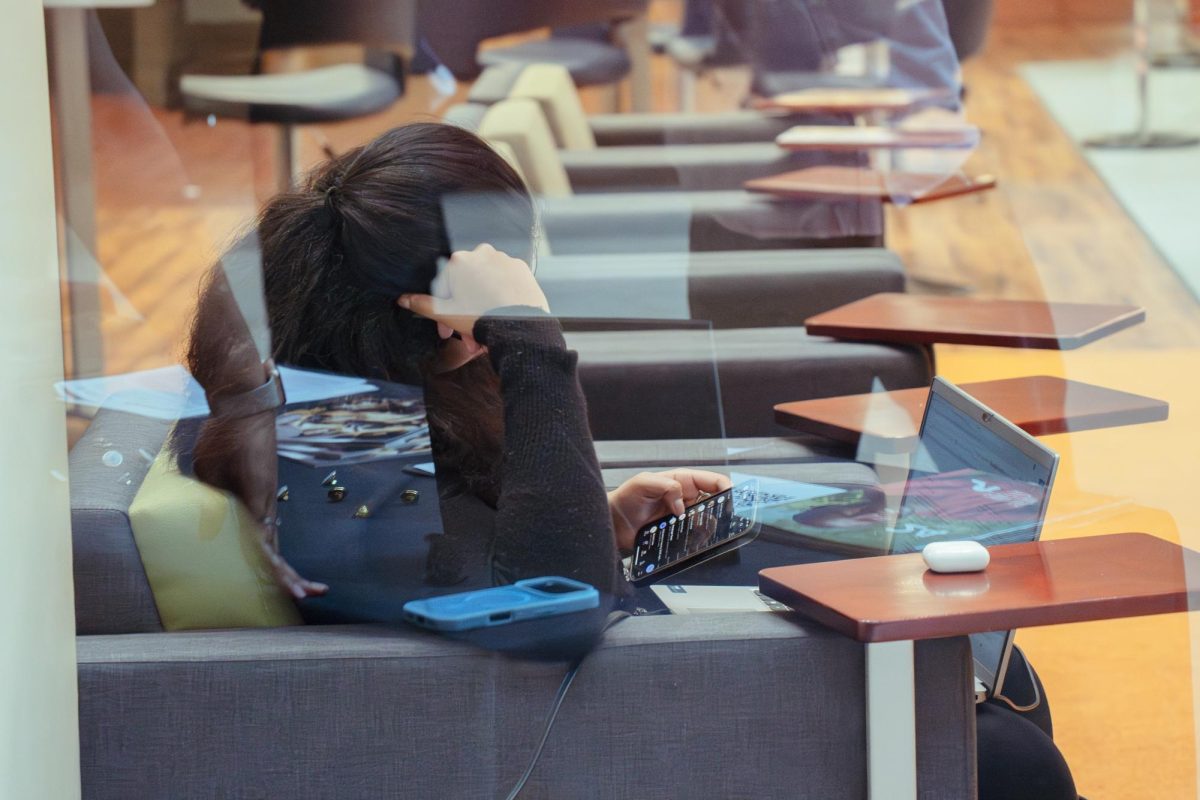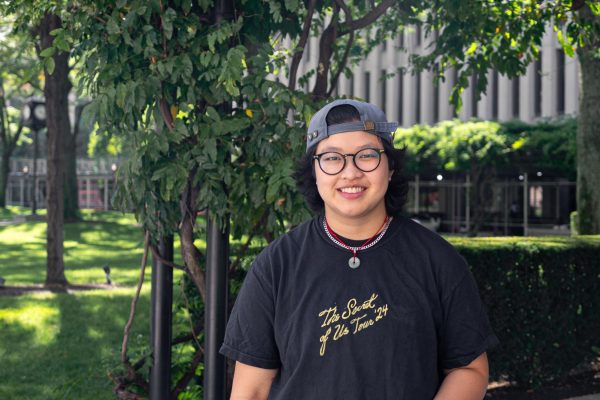From endless scrolls to trending sounds, social media has become part of the rhythm of campus life. For many students, TikTok and Instagram serve not just as entertainment, but as quick escapes from the pressure of deadlines. In the library, phones glow under the dim light as students sneak a scroll between notes. In the Ram Café, groups gather around one screen, laughing at the same viral clip. Even late at night when dorm hallways are quiet, the glow of a phone screen is a familiar comfort.
According to a report by Tori DeAngelis in the American Psychological Association’s Monitor on Psychology, teens in the U.S. now spend an average of nearly five hours a day on social media. This level of engagement shapes how students balance their time and connect with one another, making social media a central factor in both academic and social life.
Hashtags not only organize content but also shape how students talk about their goals and struggles. Two that have recently gained traction are the #LockIn trend, which encourages focus and productivity, and the #AcademicValidation trend, which highlights pressures around achievement and recognition.
Trends like #LockIn and #AcademicValidation blur the line between productivity and distraction, offering both a push to stay focused and a constant temptation to drift away.
Tiffany Wu, Fordham College at Lincoln Center (FCLC) ’26, described how she uses the #LockIn phrase in her daily life.
“I think it is a phrase you use to describe really dedicating yourself to a particular goal, whether it be in the moment or in the grand scheme of things,” Wu said. “Usually when I say I need to lock in, it can mean at the gym or perhaps with my studies.”
The term has slipped into everyday conversations among students, often used as both a joke and a serious reminder. “Lock in” pops up in group chats, appears scribbled on whiteboards in study rooms and is even exchanged casually in the gym, evidence of how a TikTok trend has crossed into the language of campus life.
Wu noted both positive and negative effects of the trend. Trends like #LockIn and #AcademicValidation blur the line between productivity and distraction, offering both a push to stay focused and a constant temptation to drift away. What begins as motivation can easily spiral into procrastination, raising questions about whether these platforms truly help students or simply repackage their struggles in viral form.
“I truly use TikTok as a source of motivation,” Wu said. “But I also fall victim to doomscrolling when I should be doing work, so I think it can go both ways.”
Other students echoed this experience of balance between motivation and distraction. Juan Hernandez, FCLC ’28, said that constant scrolling was once a major part of his routine.
“A lot of my peers have this kind of work-hard, play-hard mentality. In other words, they’re often proponents of setting aside time to really focus and work on the things that you need to work on.” Juan Hernandez, FCLC ’28
He described nights when opening TikTok for a short break would stretch far longer than planned, with videos piling up as assignments sat untouched. Even after deleting the app, he noticed the same habit reemerging with Instagram Reels, a pattern that shows how easily one platform can replace another in students’ routines.
“When I had TikTok, I definitely utilized it way too much, far too often, and quite honestly, it was the reason I deleted it,” Hernandez said. “But nowadays Instagram Reels takes up more time than it probably should, though not enough for me to justify deleting Instagram.”
For Hernandez, the #LockIn trend also reflects what he sees in Fordham’s student culture.
“A lot of Fordham students I’ve encountered have fully participated in this trend,” he said. “A lot of my peers have this kind of work-hard, play-hard mentality. In other words, they’re often proponents of setting aside time to really focus and work on the things that you need to work on.”
The #AcademicValidation trend reflects a different side of student life — one that emphasizes grades and external recognition. A specific corner of TikTok associates this trend with bookish characters from film and TV. Edits of Rory Gilmore, Spencer Hastings and Elle Woods serve as inspiration for academic hustle.
In one viral video, TikTok user @rissypissy16 captioned their post “Trying to explain to a normal person why I’m crying in the bathroom stall over a 90 on my test” and tagged it with #academicvalidation. The clip has earned over 600,000 likes, and the comments reveal a divide.
One user wrote, “Give us a real problem,” while another chimed in, “Yes it’s a good score, but not good enough.” Thousands of similar posts showcase this tension, with some students treating the trend as encouragement and others criticizing it for fueling unhealthy comparison.
Isabelle Diaz, FCLC ’27, is studying theater and has mixed feelings about the trend.
“I think (the videos are) motivational, but I also think (for) college students — at least me and my friends — I see that we tend to compare ourselves a lot,” Diaz said. “That sense of productivity online, yes, it can be motivating, but it can also just make people fall into that trap of watching more videos,” Diaz said. “So even though it might have a good purpose, I think it’s more about the aesthetics of it, and it doesn’t really do much for the person.”
Her classmate, Mariana Miranda, FCLC ’27, also studies theater and expressed similar concerns.
“I think watching other people’s successes and comparing yourself to other people could serve as motivation,” Miranda said. “But obviously, everything in extremes is bad. Comparing too much or relying too much on TikTok and Instagram can be damaging because then you want to accelerate or you want to be where they’re at.”
Across campus, the phone screen remains a powerful presence. Whether serving as a tool for focus, a source of distraction or a reminder of competition, social media continues to define how students experience college life.


